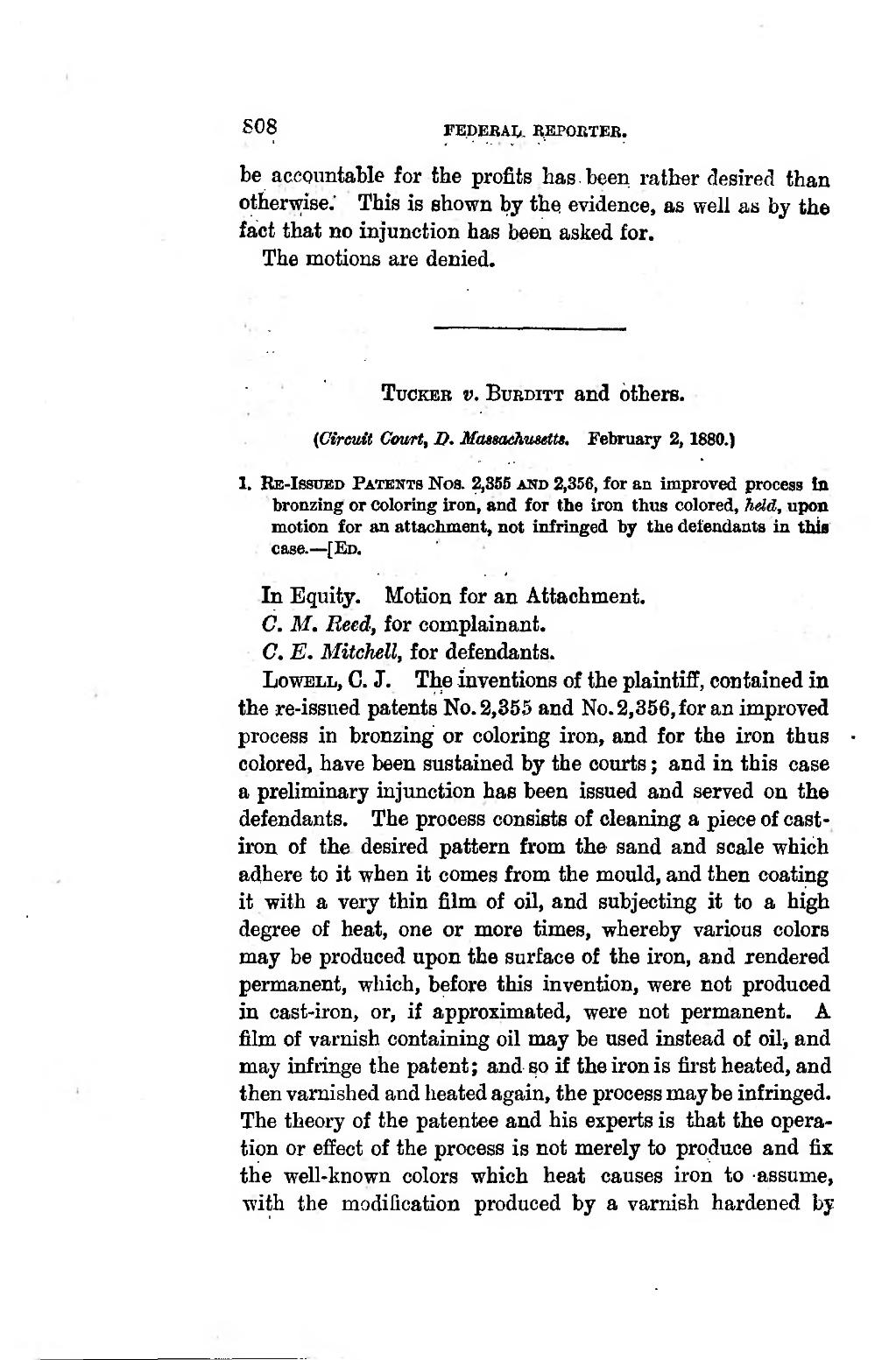508 FBDEBAU BEPOETEB. �be aceountable for the profits bas been ratber desired than otherwise; This is shown by the evidence, as well as by the fact that no injunction has been asked for. The motions are denied. ���TucKEB V. BuBDiTT and others. �{Cireuit Cowt, D. Massaehusettt. February 2, 1880.) �1. Re-Issded Patents Nos. 2,355 and 2,356, for an improved process la bronzing or coloring iron, and for the iron thus colored, held, upon motion for an attachment, net infringed by the deieudants in this case. — [Ed. �In Bquity. Motion for an Attachment. �C. M. Reed, for complainant. �CE. Mitchell, for defendants. �LowBLL, G. J. The inventions of the plaintiff, contaîned in the re-isBiied patents No. 2,355 and No. 2,356, for an improved process in bronzing or coloring iron, and for the iron thus colored, have been sustained by the courts ; and in this case a preliminary injunction has been issued and served on the defendants. The process consists of cleaning a piece of cast- iron of the desired pattern from the sand and scale whicb adhere to it when it comes from the mould, and then coating it with a very thin film of oil, and subjecting it to a high degree of beat, one or more times, whereby various colors may be produced upon the surface of the iron, and rendered permanent, which, before this invention, were not produced in cast-iron, or, if approximated, were not permanent. A film of varnish containing oil may be used instead of oil, and may infringe the patent ; and so if the iron is first heated, and then varnished and heated again, the process may be infringed. The theory of the patentee and his experts is that the opera- tion or effect of the process is not merely to produce and fix the well-known colors which beat causes iron to assume, ■with the modification produced by a varnish hardened by ����
Page:Federal Reporter, 1st Series, Volume 5.djvu/820
This page needs to be proofread.
